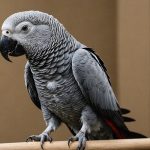Understanding Shedding in Double-Coated Dog Breeds
Double-coated dog breeds possess a unique hair structure featuring both an outer guard coat and a dense undercoat. The guard coat provides protection against elements, while the undercoat offers insulation, particularly in colder climates. This dual-layer composition is tailor-made for various environmental conditions.
Causes of shedding in these breeds include health and environmental factors. Nutritional deficiencies and allergies can exacerbate the shedding process. Additionally, hormonal changes, resulting from life stages like pregnancy, might influence shedding intensities. Stress, arising from environments or lifestyle changes, can also contribute. Thus, addressing these health aspects is crucial in controlling excessive shedding.
In the same genre : Ultimate guide to effortlessly introducing a new ferret to your established crew
Shedding seasons are notable, with frequency varying across breeds. Typically, there’s an observed spike during spring and fall, known as “blowout” seasons. During these periods, dogs shed their undercoats to adjust to temperature shifts, increasing or decreasing warmth as needed. For instance, in the spring, dogs shed the heavy winter undercoat, preparing for warmer weather. Understanding these patterns can help with managing a dog’s coat effectively throughout the year. This shedding cycle is more pronounced in breeds residing in regions with stark seasonal contrasts.
Effective Grooming Techniques
Grooming practices for double-coated dog breeds are crucial to managing shedding and maintaining a healthy coat. Grooming schedules should be adhered to, especially during shedding seasons like spring and fall. Regular brushing, ideally several times a week, is foundational. Frequency will depend on the dog’s shedding tendencies and climate. Brushing removes loose hair and prevents tangles, which can irritate a dog’s skin.
Also to see : Crafting the Ultimate Refuge: How to Design a Secure and Stimulating Habitat for Your African Grey Parrot
Selecting the right de-shedding techniques and tools will minimize hair loss. Opt for brushes designed for double-coats, such as slicker brushes and undercoat rakes. Techniques should be gentle to avoid damaging the skin, and brushing should follow the fur’s natural direction.
Establishing a grooming routine not only reduces shedding but also enhances coat health. It’s essential to create a comfortable environment that reassures the dog, turning grooming into a positive experience. Consistency in grooming practices helps prevent mats and distributes natural oils, improving the coat’s overall texture. A scheduled grooming practice prevents excessive shedding and supports a dog’s health and well-being. Emphasizing routine and care can significantly contribute to the dog’s comfort and the home’s cleanliness.
Choosing the Right Tools and Products
Selecting the proper de-shedding tools is essential for effectively managing the coats of double-coated dog breeds. Tools specifically designed for such breeds, like undercoat rakes and slicker brushes, can efficiently remove loose hair without harming the dog’s skin. The quality of these tools impacts their effectiveness and can significantly reduce shedding, making them a critical investment.
In addition to tools, the choice of grooming products such as shampoos and conditioners is vital. Look for products formulated to support coat health and manage shedding. These often contain ingredients like omega fatty acids, which promote healthy skin and fur. Premium products can enhance the coat’s texture, minimize itching, and provide a pleasant grooming experience for the pet and owner.
Utilising the right pet care supplies is indispensable for achieving successful grooming results. Investing in quality ensures that grooming is both efficient and gentle, contributing to the overall well-being of the dog. Effective grooming tools and products not only maintain a healthy coat but also support the connection between pet and owner throughout the grooming process.
Dietary Considerations for Healthy Coats
Ensuring that double-coated dog breeds maintain a healthy coat hinges on a nutritionally rich diet. A balanced diet, replete with essential nutrients, plays a pivotal role in fostering healthy skin and fur. High-quality dog foods typically contain vital omega fatty acids, vitamins, and minerals that support coat health and help mitigate excessive shedding. It’s crucial for owners to evaluate the ingredient list when selecting dog food, ensuring it meets their pet’s specific dietary needs.
In addition to balanced meals, supplements for shedding can offer significant benefits. Supplements enriched with omega-3 and omega-6 fatty acids are particularly effective in promoting shiny, resilient coats and reducing shedding. These fatty acids can be found in fish oil or flaxseed oil supplements, enhancing the diet’s efficiency in maintaining hair and skin health.
When contemplating dietary changes, incorporating premium dog food and high-quality supplements is essential for managing shedding. These products often promise better absorption of nutrients, ultimately benefiting the dog’s overall health. Recognising dietary impacts allows owners to make informed choices, ensuring their furry companions enjoy vibrant, healthy coats, free of unnecessary shedding. The right combination of diet and care can greatly enhance a dog’s well-being and appearance.
Professional Grooming Advice
Professional grooming services can be invaluable for managing shedding in double-coated dog breeds. Knowing when to seek these services is crucial, often recommended during peak shedding seasons or when owners struggle to maintain their pet’s coat at home. Professional groomers bring expertise with specialised tools and techniques, essential for handling dense undercoats and ensuring thorough de-shedding.
Groomers often utilise a combination of undercoat rakes and high-velocity dryers that efficiently remove loose hair while being gentle on the dog’s skin. Insights from expert groomers can transform grooming routines at home, offering tailored recommendations to suit individual dogs’ coat types and conditions. They can also provide tips on correctly using grooming tools to prevent hair damage and skin irritation.
Routine professional grooming enhances the dog’s coat health and can mitigate allergies by reducing dander. This regular attention to coat care supports a healthier skin environment and lessens the occurrence of mats and tangles. Engaging with professionals not only alleviates the grooming burden on owners but also ensures pets receive comprehensive coat care, making it a worthwhile investment for anyone owning double-coated breeds.
Maintaining a Clean Home
Effective pet hair management is crucial for maintaining a clean living environment when sharing your home with double-coated dog breeds. Here are some practical solutions for shedding:
-
Vacuuming: Regular and thorough vacuuming is essential. Use a vacuum specifically designed to handle pet hair, typically featuring a motorised brush, high suction power, and HEPA filters to trap allergens.
-
Lint rollers: Keep these handy for quick touch-ups on upholstery and clothing. They swiftly pick up hair and can be a real lifesaver before guests arrive.
-
Pet hair remover brushes: These tools effectively gather hair from furniture, curtains, and other upholstered surfaces. They’re designed to reach into crevices, ensuring no hair is left behind.
Implementing a shedding management plan can ease routine cleaning. Establish specific areas where your dog can relax, and cover these spots with washable throws or blankets to confine hair shedding. Regular grooming combined with these cleaning techniques reduces hair accumulation, supports cleaner homes, and helps busy households stay organised. By incorporating these strategies, pet owners can ensure a tidy space, even amidst shedding seasons. These efforts are beneficial for both the dog’s comfort and household hygiene.
Health Factors Influencing Shedding
Dog health plays a vital role in the shedding process of double-coated dog breeds. Shedding can often be exacerbated by underlying medical causes, such as skin infections, hormonal imbalances, or nutritional deficiencies. A dog’s coat is a reflection of its overall health, and any disruptions in health can manifest as increased shedding.
Stress and anxiety also contribute significantly to shedding. Events like moving to a new home, changes in the household, or the introduction of new pets can elevate stress levels in dogs, leading to hair loss. Stress can cause dogs to shed more than usual, impacting both their coat quality and well-being.
It is crucial to consult a veterinarian if shedding appears excessive or sudden. Such shedding might indicate more serious health issues like parasitic infestations or allergic reactions, which require professional intervention. Regular veterinary check-ups are essential for the early detection of health concerns that could influence shedding patterns. Maintaining a dog’s good health through balanced nutrition, regular exercise, and proper veterinary care can help mitigate stress and promote a healthy coat, reducing the likelihood of excessive shedding.







